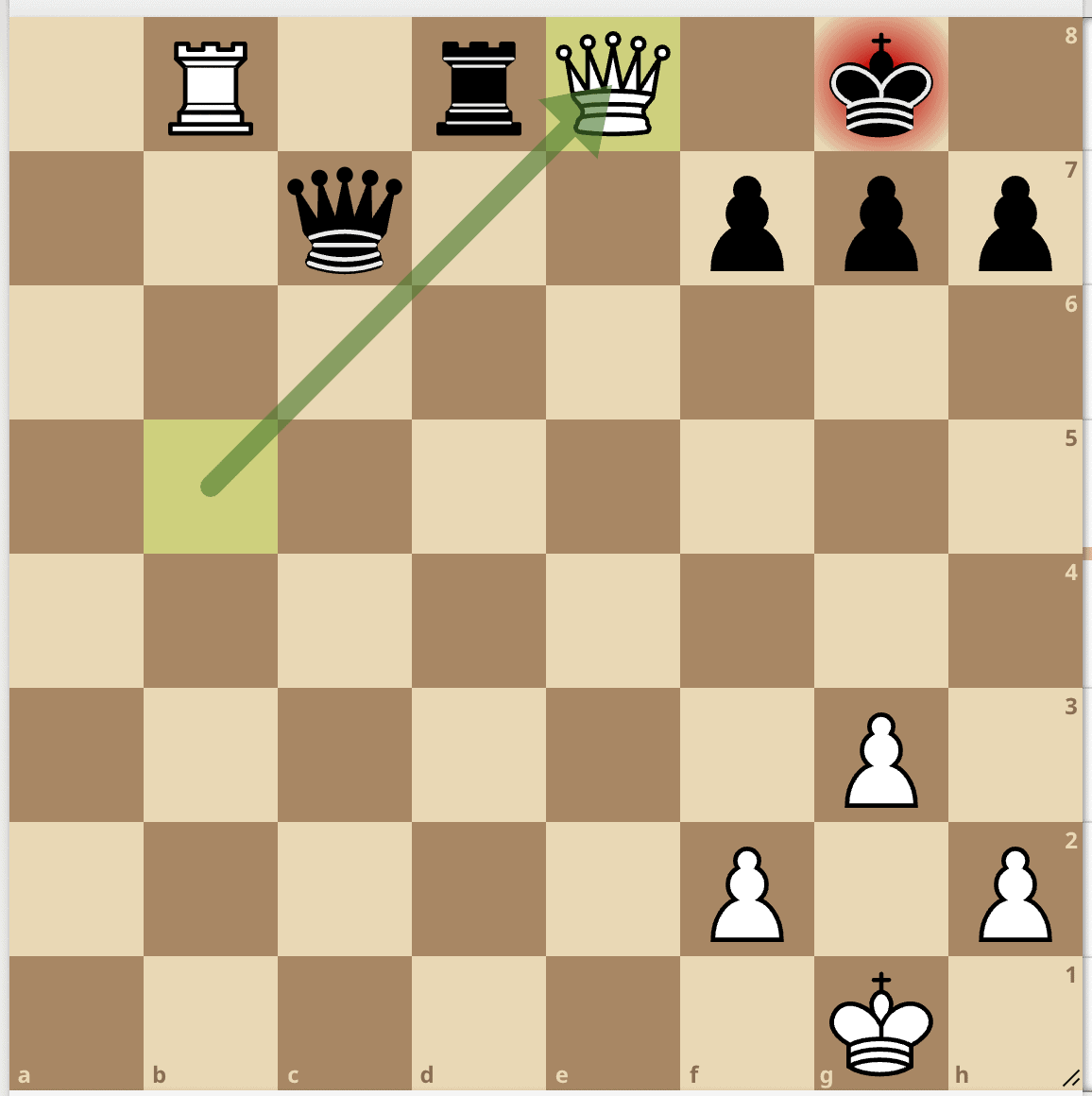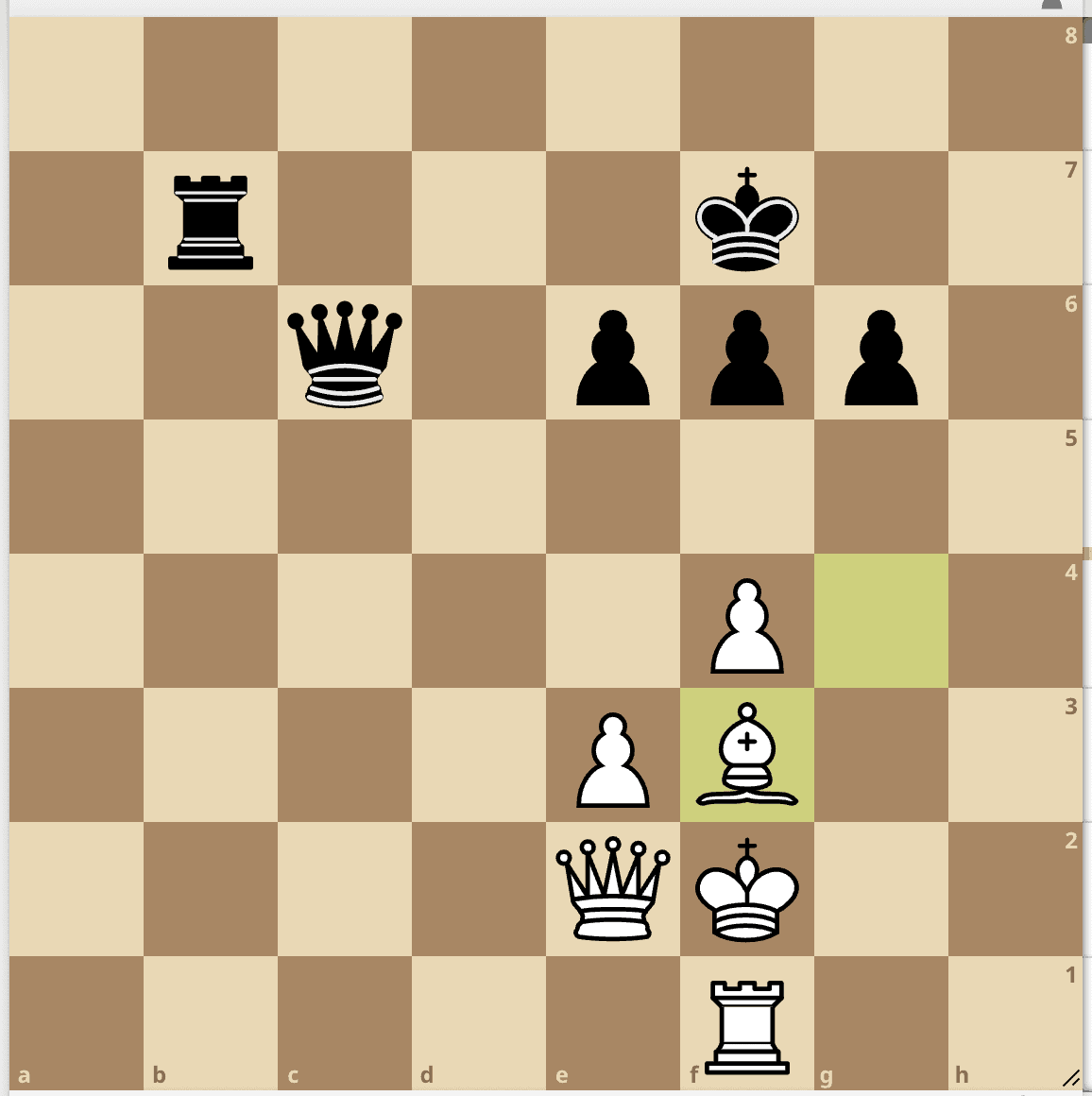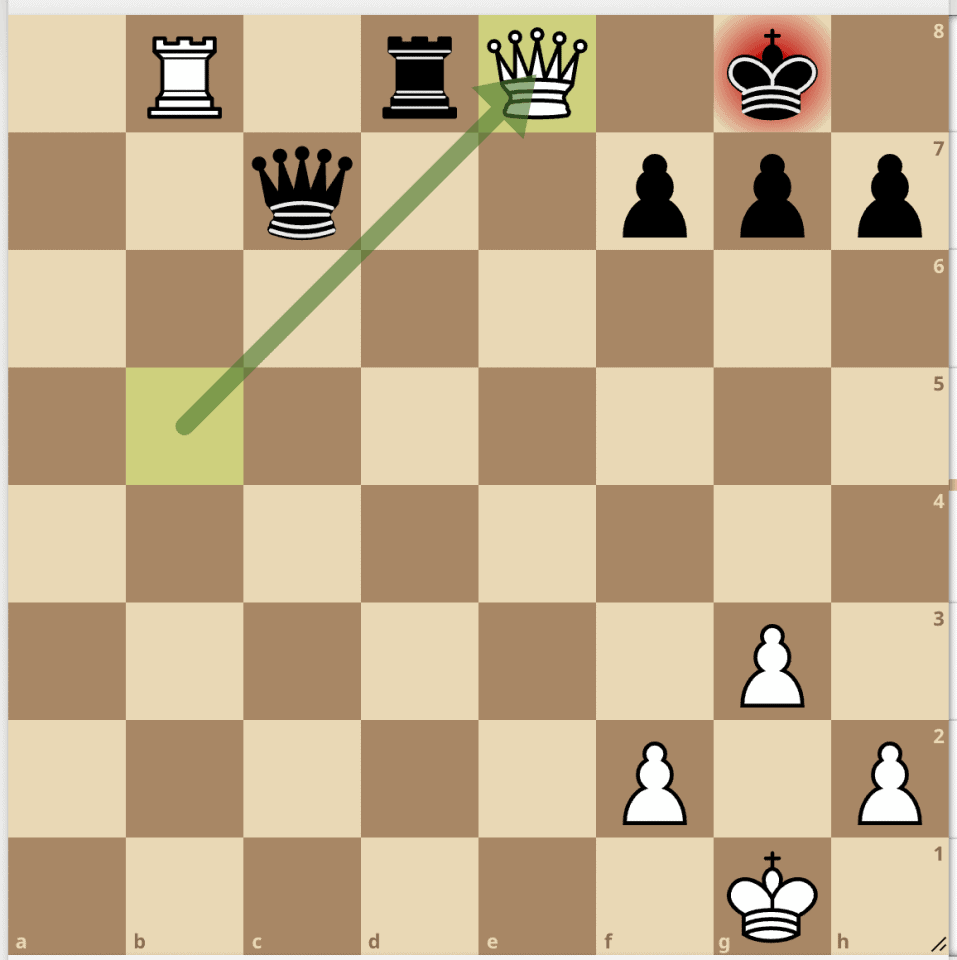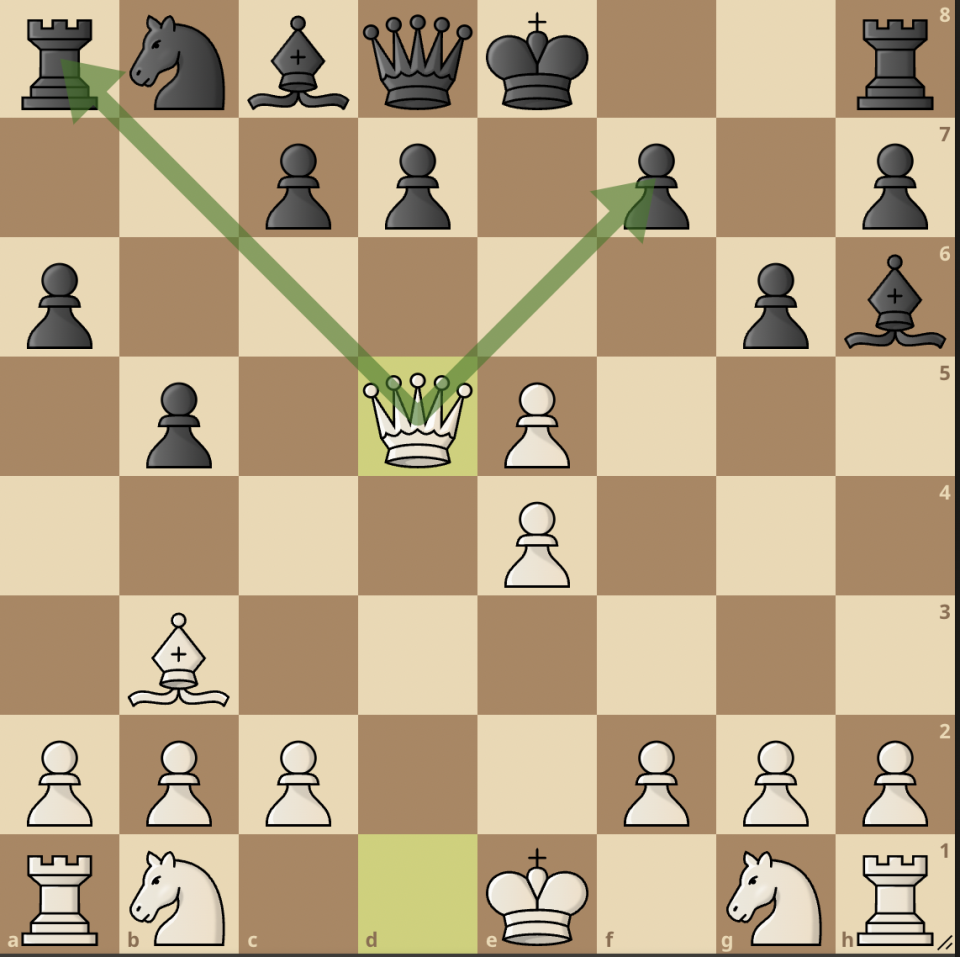The x-ray attack and skewer are two powerful tactics in chess that every chess player must know and understand.
In this post, we’ll explain how each occurs in chess and how they’re different from each other.
How Does X-ray Attacks Happen?
The X-ray attack in chess is when a piece moves to attack an enemy piece behind another enemy piece. This clever tactic allows you to threaten pieces that seem protected.
Let’s see an example:
In the position below, Black’s queen and rook placement looks great but it fails to a deadly x-ray attack.

White queen moves from b5 to e8 sacrificing itself and forcing a backrank mate after 1. Qe8+ Rxe8 and 2 Rxe8#. In this case, we could say that Black’s rook is overloaded having to deal with two attacking pieces without any help from the Black queen.
Let’s see another example:

In this second position, Black can opt to exchange queens with 1…Qxc2 but that only loses for Black since White has a material advantage.
If you’re really good at tactics, you’ll be able to quickly see that Black can execute an x-ray attack by capturing the rook on c1. The overloaded White queen is forced to take back leading to a checkmate in 2 moves.
The complete notation goes thus: 1…Qxc1+ 2. Qxc1 Rxc1+ 3. Rf1 Rxf1# The Black bishop on a6 comes in handy to help deliver mate.
We’ve seen how X-ray attacks work.
How Does Skewers Happen?
A skewer targets two enemy pieces on the same line (rank, file, or diagonal) and threatens to capture the more valuable piece. Your opponent has to move the attacked piece, allowing you to capture the other piece.
Let’s see a simple example:

In this position, White’s bishop on f3 is doing a great job attacking both the Black queen and rook at the same time.
Black has to move the queen to avoid significant piece loss after which the bishop takes the rook, a major plus for White. This is a great example of a skewer.
The key is spotting your opponent’s pieces that are lined up and choosing a move that attacks the more important piece. Your opponent essentially has to give up one piece to save the other.
What’s The Difference Between Both Tactics?
Here’s the major difference between both tactics:
In x-ray attacks, your piece indirectly attacks an enemy piece through another piece or pieces.
A skewer, on the other hand, involves attacking a more valuable piece to expose a less valuable piece. In a skewer, your opponent has to move the in-between piece not to lose it, thereby letting you attack the other one.
See the positions above if you still need clarification. You can also drop your questions in the comments section.
Let us know if this was helpful.
If you liked this, you may be interested in our guide and that explains 12 tactics you need to know for all level.







join the conversation